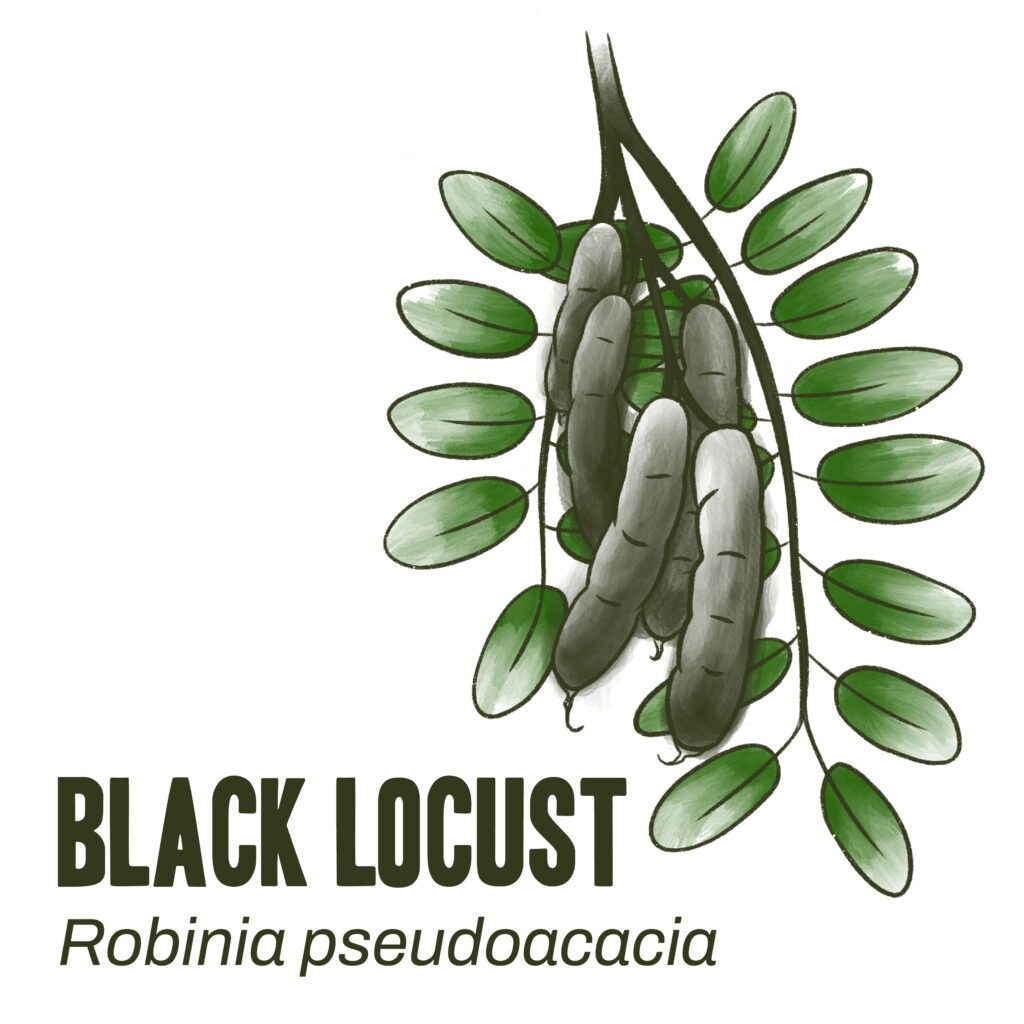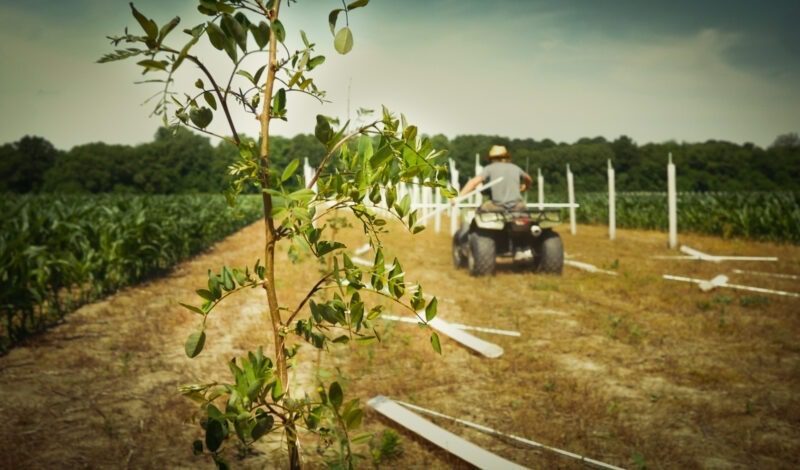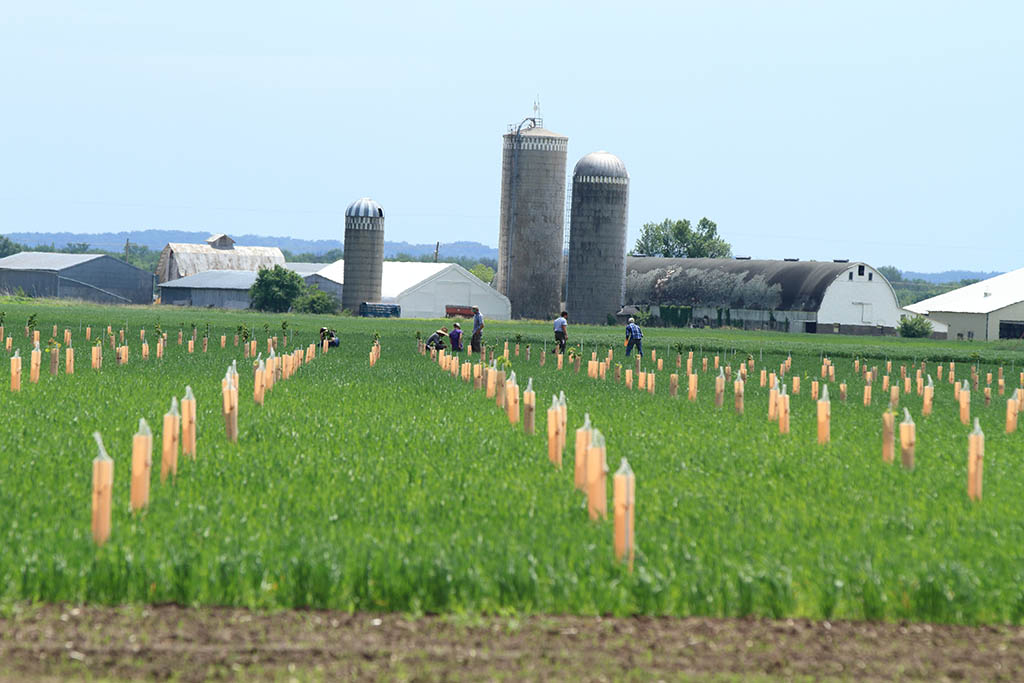
Black Locust
Robinia pseudoacacia
This fast-growing tree is used in a variety of ways within agroforestry systems, producing both rot-resistant hardwood timber and nutritious fodder for livestock. Keep black locust on a short harvest rotation for fence post-sized logs to avoid invasiveness.
DRAINAGE: Well-drained soils
LIGHT: Full sun
ZONES: 4–8
SPACING: 10 x 10 ft spacing at planting with thinning over time
YEARS TO PARTIAL/FULL BEARING: 10-30
Opportunities
Black locust is a native hardwood tree species known for its fast growth, rot-resistant wood, nectar-filled flowers and nitrogen-fixing capacity for soil improvement.
Challenges
The black locust is a more important commercial species in Europe and Asia than in the U.S. due to a North American borer, which limits the size and density of commercial-scale black locust plantings at present. Though native to parts of the Midwest, black locust is listed as a noxious species in many states due to its prodigious annual seed production and prolific resprouting ability, making it difficult to remove from natural areas.
Management
Keep black locust on a short harvest rotation for timber to avoid invasiveness.
Our Research
The Tree Crop Improvement Team is working to breed consistently high-yielding cultivars from seedling populations on farms across the Midwest. We are using aerial imagery to identify desirable cropping traits from large breeding populations, such as density of nuts within the canopy, which enables the rapid identification of new varieties. This allows us to select parents to include in a seed orchard, which will supply a new generation of farmers with improved seedlings.


RESOURCE
Black Locust
- Review more basic grower information about plant selection and management.


One-On-One Support for Farm Planning
Technical Service Program
Get help planning your perennial farm system. Our Technical Service Program is here to guide you through the process of planning, funding, and planting trees on your farm.

